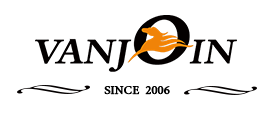How Plastic Bottles Are Made
Are you curious how raw plastic is turned into bottles? Wondering how many types of water bottles are there? Not sure what an extrusion blow machine is but do you want to learn more? Curious how your ketchup bottles are different from single-use plastic bottles? This article will answer all these questions and more.
Although there has been a push to slowly reduce the presence of plastic in our lives, plastic bottles still form the backbone of many industries worldwide, and in this article, we’ll take you through the entire process.
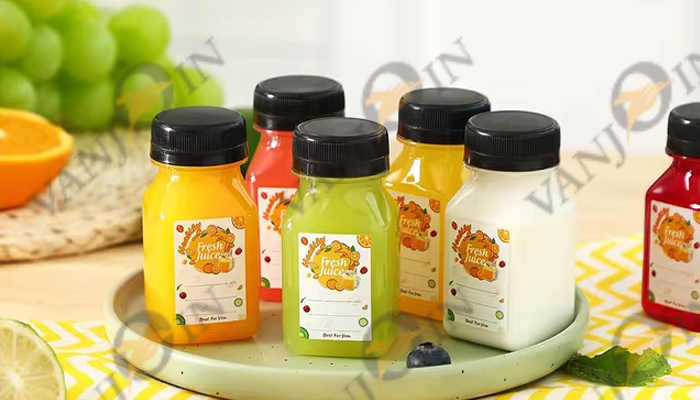
What are Plastic Bottles Made Of?
To understand how a plastic bottle is made, we must go over all the different types of plastic bottles are made from. Contrary to misconception, there are various, very different kinds of plastics, and they all require different approaches. By learning more about these materials, their advantages, and their disadvantages, you’ll get a more broader look into how plastic bottles are made, and that’s precisely why we’ll go over the most common plastics bottles are made of below!
Polyethylene Terephthalate (PET)
PET bottles are one of the most common types of plastic bottles. They’re used for beverages such as water, soft drinks, juices, and milk bottles. PET is a clear, strong, and lightweight plastic that is easily molded, making it an ideal choice for use in the production of plastic bottles.
Advantages:
1. Lightweight: PET bottles are lighter than glass bottles making them easier and cheaper to transport, reducing both costs and carbon footprint.
2. Transparency: PET bottles are clear, allowing consumers to see the contents of the bottle. Transparent bottles can be particularly important for products such as mineral water or fruit juices, where the color of the liquid might impact the prospective customer’s purchasing decision.
3. Durability: PET plastic bottles are strong and durable, making them less likely to break or crack during shipping or handling.
4. Cost-effectiveness: PET is a relatively inexpensive material, making it a cost-effective option for packaging products.
Drawbacks:
Permeability: PET bottles are slightly permeable, which means that oxygen and carbon dioxide can pass through the walls of a bottle and affect the taste and quality of the liquid inside.
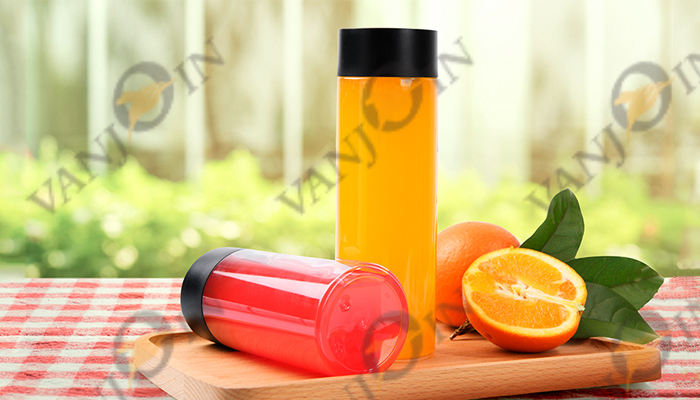
High-Density Polyethylene (HDPE)
HDPE bottles are another common type of plastic bottle used for packaging a wide range of products, including milk, juice, cleaning agents, and personal care products. And although they are interchangeable in use with PET bottles in a lot of cases, they also have unique qualities that make them uniquely suitable for specific applications.
Advantages:
1. Strength and Durability: HDPE bottles are strong and durable, resistant to impact and chemicals, which makes them an excellent choice for packaging harsh chemicals, such as cleaning agents.
2. Recyclability: HDPE is a highly recyclable material, and recycled HDPE can be used to create new bottles or other products. This can help to reduce waste and conserve natural resources.
3. Versatility: HDPE bottles come in a range of sizes and shapes, making them suitable for a wide range of packaging applications.
Drawbacks:
Low Heat Tolerance: HDPE has a low heat tolerance, which means that it may not be suitable for packaging products that require high-temperature sterilization.
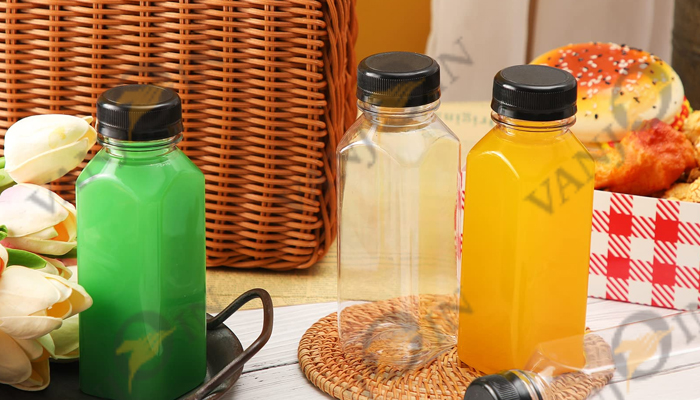
Polyvinyl Chloride (PVC)
PVC bottles are less common than PET or HDPE bottles and are primarily used for packaging products such as detergents, cleaners, and chemicals.
Advantages:
1. Resistance to Temperature: PVC bottles can withstand a wide range of temperatures, making them suitable for packaging products that require high temperatures during packaging or shipping.
2. Transparency: PVC bottles are clear, allowing consumers to see the contents of the bottle before purchasing. And although it is more important for PET bottles’ use cases, PVC bottles still benefit from the visual appeal.
Drawbacks:
1. Chemical Leaching: PVC bottles can leach chemicals, including phthalates and bisphenol A (BPA), which have been linked to health concerns.
2. Low UV Resistance: PVC bottles are not resistant to ultraviolet (UV) radiation, which can cause them to degrade and discolor over time.
Low-Density Polyethylene (LDPE)
LDPE bottles are a popular type of plastic bottle used for packaging products such as shampoo, lotion, and other personal care items. LDPE is an ideal choice for packaging applications that require flexibility and durability.
Advantages:
1. Flexibility: LDPE bottles are flexible and can be easily squeezed, making them ideal for packaging products such as lotions and shampoos.
2. Lightweight: LDPE bottles are lightweight, which not only makes them cheaper to transport but also makes products that use these bottles easier to hold and more comfortable.
Drawbacks:
1. Limited Heat Resistance: LDPE has a relatively low heat tolerance, making it unsuitable for various applications that require high heating during various stages of production.
2. Limited Strength: LDPE bottles are not as strong or durable as other types of plastic bottles such as PET or HDPE, which makes them less suitable for packaging applications that require tough materials.
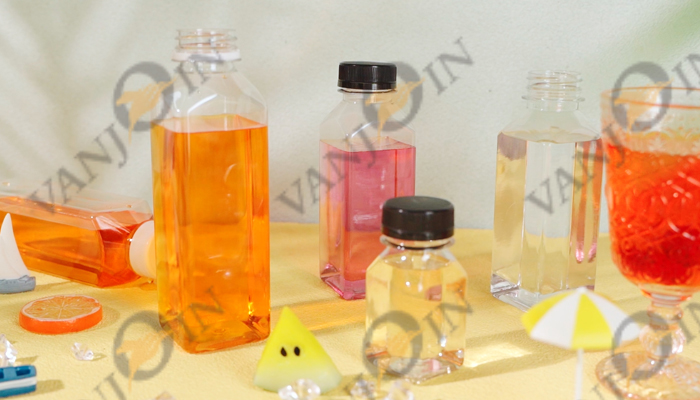
The Ways a Bottle is Made
There’s no “one way” you can make bottles. Various types of molding processes are used to make plastic bottles. Understanding these molding processes is essential to learning how a plastic bottle is made.
Injection Blow Molding
Injection blow molding is a widely used manufacturing process for producing hollow plastic bottles in large quantities. This process is typically used for producing bottles with tight tolerances and high-quality finishes. Injection molding involves two main stages: the injection molding of a preform and the blow molding of the preform into the final shape of the bottle.
Advantages
Injection molding can produce bottles with consistent thickness and a highly detailed finish. This makes it an ideal choice for producing bottles for the pharmaceutical and cosmetic industries, where precision and aesthetics are critical.
This manufacturing technique can be almost entirely automated, which means you can produce large quantities of bottles in a relatively short period. This helps reduce production costs and increase efficiency.
Disadvantages
The initial tooling costs for injection blow molding are higher than other manufacturing methods, making it more suitable for high-volume production runs rather than small batches.
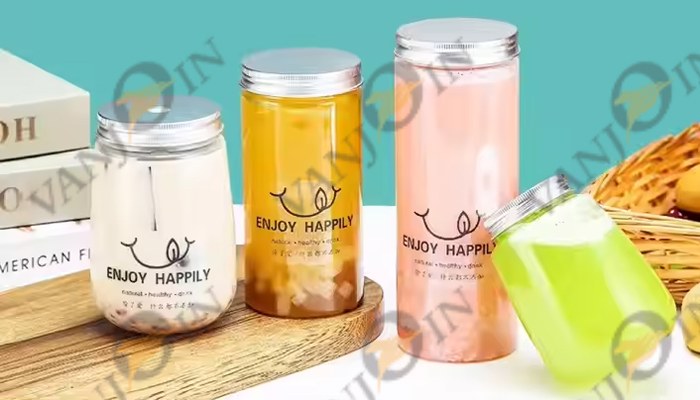
Extrusion Blow Molding
Another widely used manufacturing process for producing hollow plastic bottles, extrusion molding is typically used for producing bottles with thin walls and large capacities. This process involves three main stages: the extrusion of a parison, the inflation of the parison into a preform, and the blow molding of the preform into the final shape of the bottle.
Advantages
This plastic bottle manufacturing process can produce large quantities of bottles with minimal material waste. The process is highly automated, which helps to reduce labor costs and increase efficiency.
Extrusion molding offers the ability to produce bottles with complex shapes and intricate designs. However, the process can be limited by the size and shape of the mold, which can affect the final design of the bottle. An extrusion blow molding station deals with larger molds better.
Disadvantages
The quality of the manufactured bottle can be affected by factors such as mold temperature, cooling rate, and blow pressure, which can require careful monitoring and adjustment. There’s more room for error with extrusion molding.
Stretch Blow Molding
Widely used for producing plastic bottles for carbonated drinks, water, and other beverages, the stretch molding process involves stretching a preform of molten plastic into the final shape of the bottle using a combination of heat and pressure. This is typically done in two main stages: putting a preform into an injection molding machine and the stretch molding of the preform into the final shape of the bottle.
Advantages
Stretch molding also allows for the production of lightweight bottles with excellent barrier properties, which helps protect the contents from oxygen and moisture making it an ideal choice for the food and beverage industry where product aesthetics are critical.
Disadvantages
The initial tooling costs for stretch molding can be high, making it more suitable for high-volume production runs. The process also requires careful monitoring and control of the temperature, pressure, and stretching forces to ensure the quality of the final product is up to certain standards. This is the most expensive and most intricate plastic bottle manufacturing process on our list. The results, which are high-end reusable bottles, might certainly be worth it.
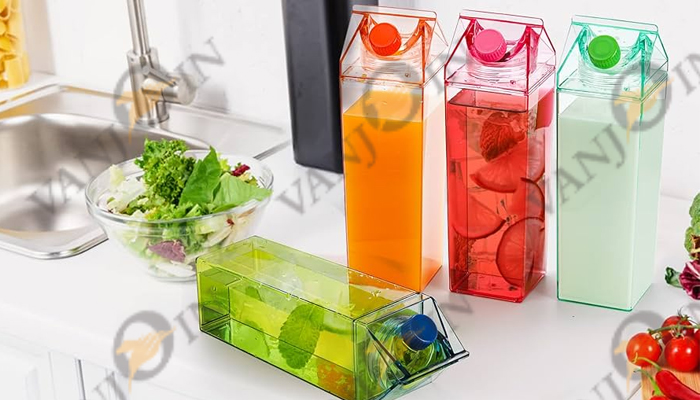
How plastic bottles are made
How is a plastic bottle made? The raw material is melted by the machine, injection molded into a embryo, and the embryo is reheated and blown to form a bottle.According to demand, we can produce plastic bottles of different materials and bottle shapes.
1.Raw material suction, conveying, melting system
All our materials used for any bottle and jar are 100% new and food grade. the PET resin chips are all kept in the jumbo bags, there is an Vacuum Feeder pipe linked between the material and injection molding machine. The PET chips will be sent to the feed hopper, then from the hopper, the PET resin chips/pellets will enter the heated barrel, it will be melted by heat and the shearing action of a feed screw to mix it completely.
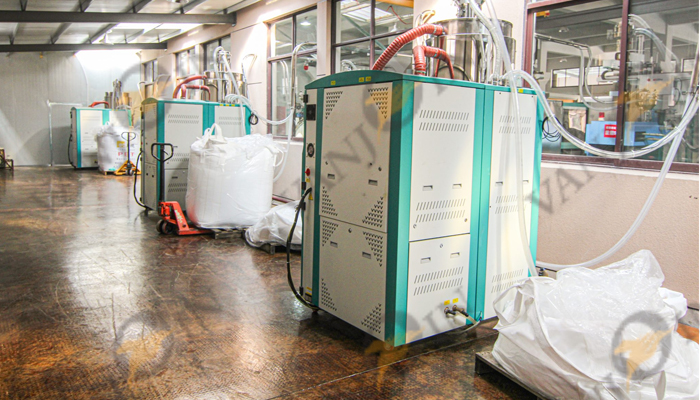
2.Injection molding stage: tube, PP cover, etc.
The plastic is then injected into multiple-cavity molds where it forms the shape of long, thin tubes. These tubes, called Preforms, usually include the formed necks and threads that will be used to cap the bottles that are yet to come. PET preforms, or pre-forms, are easily shipped to bottling facilities as they are much more compact than fully formed bottles.
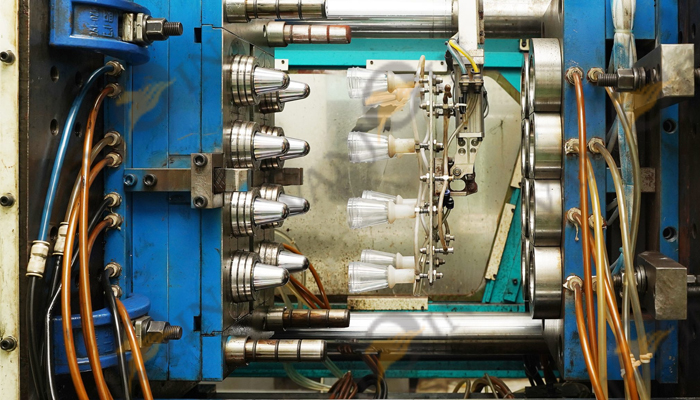
3.Tube Reheating and Blow Molding Stages
During the re-heat process, the preforms are loaded into a feeder and run through an unscrambler, which orients the preforms for feeding into the blow molding machine. The preforms are heated by passing by quartz heaters and then enter the mold.
Here, a thin steel rod, called a mandrel, slides into the neck of the preform where it fills the preform with highly pressurized air, and stretch blow molding begins: as a result of the pressurized air, heat, and pressure, the preform is blown and stretched into the mold and forms a bottle shape.
The mold must be cooled relatively quickly, so that that the newly formed component is set properly. Water can be coursed through pipes surrounding the mold, which indirectly cools the mold and plastic. Direct methods include using pressurized air or carbon dioxide directly on the mold and plastic.
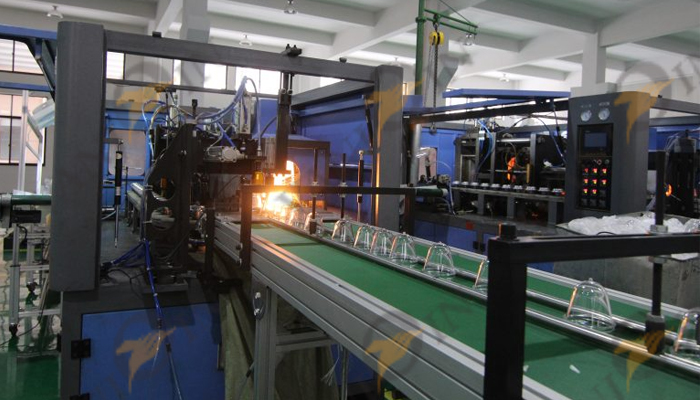
4.Plastic bottle generation inspection stage
Once the bottle (or, in continuous manufacturing, bottles) has cooled and set, it is ready to be removed from the mold. If a continuous molding process has been used, the bottles will need to be separated by trimming the plastic in between them. If a non-continuous process has been used, sometimes excess plastic can seep through the mold during manufacturing and will require trimming. After removing the bottle from the mold and removing excess plastic, the plastic bottles are ready for transportation or filling.
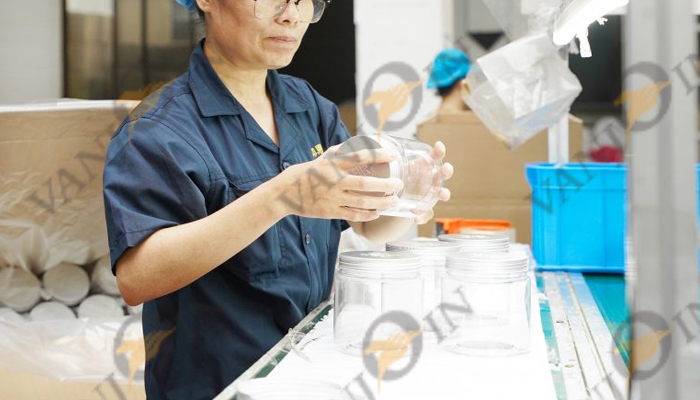
After the production is completed, the plastic bottles will be packaged and shipped after passing the manual quality inspection. We can also customize logos, labels and even brand new designs according to customers’ needs.
Related Information
- PREV:Is PET Plastic Safe?
- NEXT:Beverage Packaging Types
